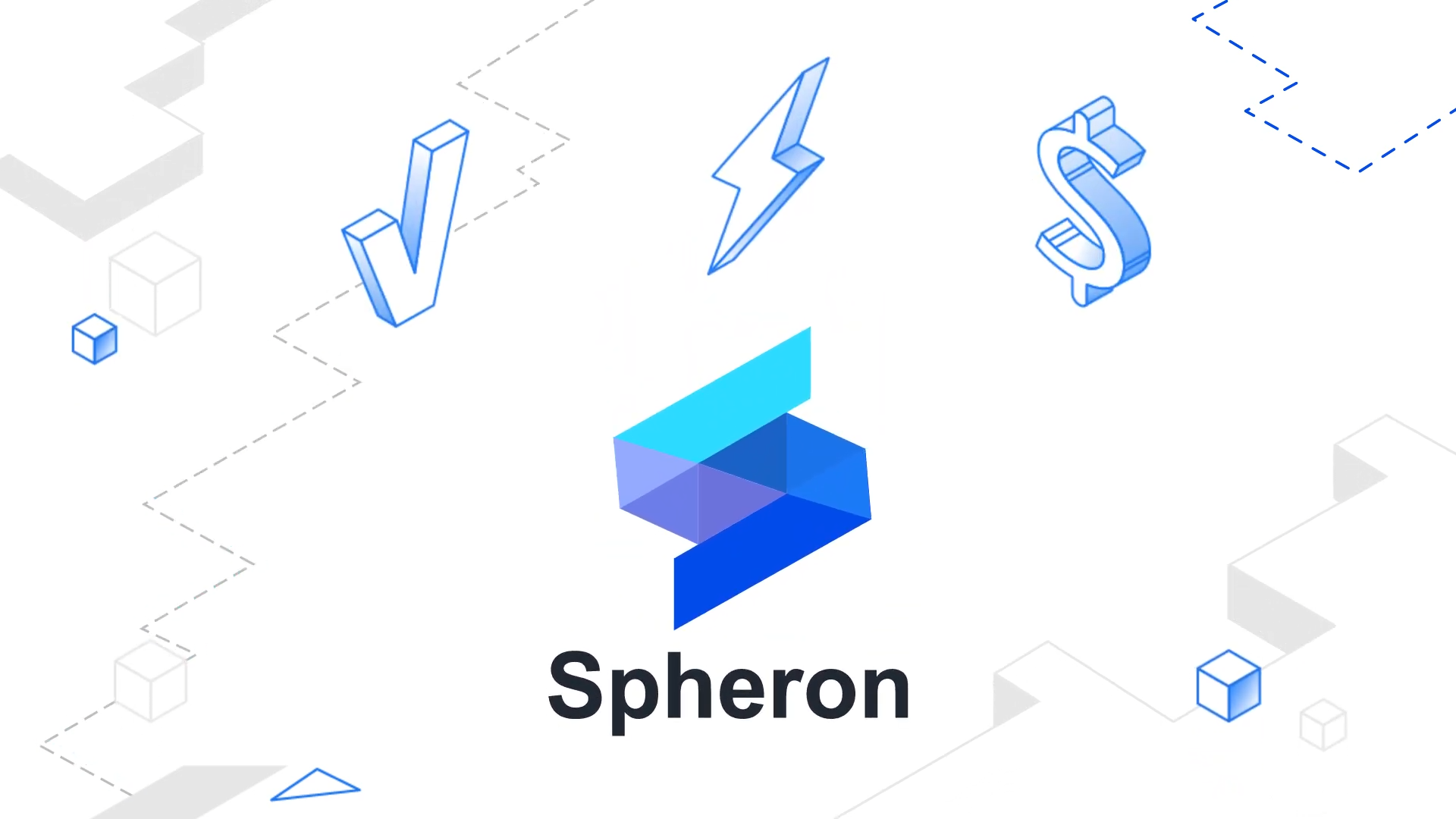Introduction to Spheron Network and Fizz Node: The Future of Edge Computing
Posted on March 5, 2025 by Admin

1. Overview of Spheron Network
Spheron Network is an advanced decentralized computing platform designed to provide robust, flexible, and efficient infrastructure for distributed applications, particularly in the fields of Web3, AI, and edge computing applications. With the mission to democratize compute power, Spheron enables users, businesses, and developers to leverage computing resources from a global network of distributed nodes, rather than relying on centralized data centers.
Spheron Network operates on a peer-to-peer (P2P) model, where nodes (computers) join the network to provide resources such as CPU, RAM, GPU, storage, and bandwidth. These resources are managed through blockchain protocols, ensuring transparency, security, and decentralization. One of the core components of Spheron is the Fizz Node, a specialized node optimized for edge computing applications, offering high performance and scalability.
2. What Is a Fizz Node?
A Fizz Node is a software managed via the Spheron CLI (sphnctl), running on Docker, designed to participate in the Spheron Network by providing computing and storage resources for decentralized applications. Fizz Node is not just a typical node; it integrates intelligent features such as dynamic resource management, performance optimization, and support for Web3 protocols (like IPFS, Filecoin, or Ethereum). It is an ideal solution for developers looking to build or deploy edge computing applications, such as AI, machine learning, or decentralized applications (dApps).
Fizz Node can run on a variety of hardware, from cloud servers and personal computers to edge devices like Raspberry Pi. This makes Spheron Network a flexible, accessible, and user-friendly platform. Fizz Node supports both CPU and GPU, but the GPU-free version (spheron/fizz-node:latest-cpu) is the most common choice for users without specialized hardware.
2.1. Key Features of Fizz Node
- Decentralized Computing: Fizz Node leverages computing resources from a decentralized network, reducing reliance on large data centers, saving costs, and enhancing sustainability.
- Web3 Support: Integrated with protocols like IPFS, Filecoin, and Ethereum, Fizz Node supports decentralized data storage and processing, making it suitable for blockchain and dApps.
- Dynamic Resource Management: Fizz Node automatically manages CPU, RAM, storage, and bandwidth, ensuring optimal performance for applications running on it.
- Easy Deployment via Spheron CLI: Using
sphnctland the Spheron dashboard, you can deploy Fizz Node with just a few commands, without complex Docker CLI configuration. - Security and Transparency: Utilizing blockchain to manage nodes and resources, ensuring all transactions and activities are transparent and tamper-proof.
2.2. Benefits of Fizz Node
- Cost Savings: Instead of renting expensive data centers, users can utilize resources from the Spheron Network, reducing operational costs.
- Scalability: Easily add new nodes to the network, scaling applications without significant hardware investment.
- AI and Machine Learning Support: With its powerful computing capabilities, Fizz Node is ideal for AI and ML models requiring substantial resources without centralized data centers.
- Developer-Friendly: The Spheron dashboard and
sphnctlprovide a simple interface, detailed documentation (like docs.spheron.network/fizz/docker-resource-setup), and robust community support (Discord, Twitter) to help developers deploy easily.
3. Deploying Fizz Node via the Spheron Dashboard
Spheron provides an online dashboard (typically at dashboard.spheron.network) to help users deploy Fizz Node quickly and easily, requiring just a few simple steps. Below is a detailed guide based on the interface you provided, including the 0.02 ETH registration fee.
3.1. System Requirements
Before starting, ensure your system (Ubuntu/Debian on bknode1) meets the following:
- Operating System: Linux (Ubuntu 20.04/22.04, Debian, or equivalent).
- Docker: The latest version (minimum 20.10, recommended 27.3.1).
- Minimum Resources:
- CPU: 2 cores (minimum, you have 32 cores – sufficient).
- RAM: 4 GB (minimum, you have 64 GB – sufficient).
- Storage: 20 GB (minimum, you have 1000 GB – sufficient).
- Bandwidth: 50 Mbps (minimum, you have 1 Gbps – sufficient).
- Internet: A stable connection to pull images and communicate with the Spheron Network.
- Ethereum Wallet: At least 0.02 ETH to register a Fizz Node.
3.2. Access the Spheron Dashboard
- Visit dashboard.spheron.network and log in using an Ethereum wallet (such as MetaMask, Trust Wallet, etc.).
- Go to the "Setup" or "My Fizz" section to view your system resources (CPU: 32, RAM: 64 GB, Storage: 1000 GB) and begin the setup process.
3.3. Setting Up Fizz Node
Follow the steps in the dashboard:
Step 1: Install Spheron CLI
Verify the installation:
sphnctl --version
sphnctl --help
Run the following command in your terminal to install sphnctl:
curl -sL https://sphnctl.sh | bash
Step 2: Register and Start Your Fizz Node
- Pay 0.02 ETH:
- On the dashboard, you’ll see a request to pay 0.02 ETH to register your Fizz Node. Connect your Ethereum wallet (MetaMask, Trust Wallet, etc.) and send 0.02 ETH to the provided address.
- If you don’t have ETH, purchase it on an exchange (Binance, Coinbase, etc.) or convert from a fiat wallet, then transfer it to MetaMask.
- After successful payment, you’ll receive a unique token to run the
sphnctl fizz start --token <your-token>command. - This command automatically pulls the
spheron/fizz-node:latest-cpuimage, configures resources (CPU: 2, RAM: 4 GB, Storage: 20 GB), and starts the Fizz Node container on Docker, using theruncruntime andbridgenetwork.
Run the command:
sphnctl fizz start --token 0x08b7aAe003fb8530...
On the dashboard, click "Generate & Start Your Fizz Node" to retrieve your unique command, for example:
sphnctl fizz start --token 0x08b7aAe003fb8530...
Step 3: Verify Installation and Check Logs
- Ensure there are no errors (like
container is not running). If there are, investigate further (see section 3.4).
Use the -f option for real-time log monitoring:
sphnctl fizz logs -f
Run the following command to check logs and verify your Fizz Node:
sphnctl fizz logs
3.4. Update Resources (Optional)
- On the dashboard, you see your current resources (CPU: 32, RAM: 64 GB, Storage: 1000 GB). If needed, click "Update Node" to adjust resources to meet Fizz Node requirements (typically CPU: 2, RAM: 4 GB, Storage: 20 GB).
Update via sphnctl:
sphnctl fizz update --cpus 2 --memory 4g --storage 20g
4. Benefits of Using Spheron Network and Fizz Node
- High Performance: Fizz Node leverages edge computing resources, reducing latency and speeding up processing for distributed applications.
- Scalability: Easily add new nodes to the network, scaling applications without significant hardware investment.
- Security and Transparency: Using blockchain to manage nodes ensures data and resources are secure and transparent.
- Strong Community Support: Spheron provides detailed documentation, a user-friendly dashboard, and support through Discord and Twitter, helping users resolve issues easily.
- Low Cost: With a one-time 0.02 ETH registration fee, you can join the network without major hardware or data center investments.
5. About the 0.02 ETH Fee
- Purpose: 0.02 ETH is a one-time fee to register a Fizz Node, ensuring transparency and security within the Spheron Network. This fee helps maintain the ecosystem and rewards other nodes in the network.
- Payment Method:
- Access the Spheron dashboard and click on the Fizz Node registration section.
- Connect your Ethereum wallet (MetaMask, Trust Wallet, etc.).
- Send 0.02 ETH to the provided address.
- After successful payment, you’ll receive a token to run
sphnctl fizz start --token <your-token>.
- ETH Source: If you don’t have ETH, purchase it on an exchange (Binance, Coinbase, etc.) or convert from a fiat wallet, then transfer it to MetaMask.
6. Conclusion
Spheron Network and Fizz Node represent a significant advancement in edge and decentralized computing, offering a powerful, flexible, and cost-effective solution for developers and businesses. With the Spheron dashboard and sphnctl, deploying Fizz Node is simple, requiring just a few steps and a 0.02 ETH registration fee. By joining the Spheron Network, you not only optimize your resources but also contribute to the global decentralized computing ecosystem.
Start with Fizz Node today by following the instructions on the dashboard, or join the Spheron community at docs.spheron.network, Discord, and Twitter to explore the potential of this platform. Spheron is not just a technological solution—it’s a gateway to the future of decentralized computing.
Top post

Blockcast: Accelerating the Internet, Connecting the World
What is Blockcast? Blockcast is a next-generation Content Delivery Network (CDN) that uses multicast technology to address bandwidth challenges in the era of booming streaming. Born at UC Berkeley, the project aims to build a decentralized network that leverages community power to deliver high-quality content like 4K and 8K globally while slashing costs for providers. With the slogan "Content Delivery, Powered By You!", Blockcast is not just a technology but an ecosystem where anyone can parti
June 2, 2025

Analysis of Nockchain: A ZK-Proof-of-Work Blockchain
Introduction to Nockchain In the fast-evolving world of blockchain, Nockchain emerges as a unique project aiming to revolutionize decentralized computing. Founded in 2023 in Berlin, Germany, Nockchain is a high-throughput blockchain leveraging a Zero-Knowledge Virtual Machine (ZKVM) and a novel ZK-Proof-of-Work (ZKPoW) consensus mechanism. With its native token, $NOCK, and a promise of a fair launch, Nockchain has sparked interest in the Web3 community. However, controversies at its mainnet lau
May 29, 2025

Monad: The Future of Layer 1 Blockchain with Unparalleled Performance
As the blockchain industry continues to evolve, Monad emerges as a promising Layer 1 (L1) blockchain, delivering exceptional performance and scalability. Aiming for 10,000 transactions per second (TPS), a block time of just 0.5 seconds, and full compatibility with the Ethereum Virtual Machine (EVM), Monad is capturing the attention of developers and users alike. Let’s dive into the details of this groundbreaking project and discover how you can get involved today! What is Monad? Monad is a La
May 12, 2025

Drosera Network: Revolutionizing DeFi Security and How to Run a Node
Decentralized Finance (DeFi) has transformed the financial landscape, but with great innovation comes great risk. Since 2014, DeFi protocols have lost nearly $80 billion to exploits, highlighting the urgent need for robust security solutions. Enter Drosera Network, a decentralized security protocol built on Ethereum that aims to safeguard DeFi ecosystems through automated threat detection and response. In this article, we’ll dive deep into what Drosera Network is, why it matters, and provide a s
April 20, 2025

Gensyn: Revolutionizing AI Compute and Guide to Running a Node
Introduction to the Gensyn Project Gensyn is a decentralized Machine Learning Compute Protocol designed to connect global computing resources into a supercluster tailored for artificial intelligence (AI). Developed by a UK-based team, Gensyn aims to reduce the costs of training AI models, increase accessibility for researchers, engineers, and academics, and ensure transparency and censorship resistance through blockchain technology. Goals and Vision * Cost Reduction: Gensyn claims it can cu
April 14, 2025

Pipe Network: The Future of Decentralized CDN and Opportunities from the Node DevNet 2 Program
In the digital era, where the speed of content delivery is a critical factor, content delivery networks (CDNs) have become indispensable in ensuring a seamless user experience. However, giants like Cloudflare and Akamai, while powerful, remain constrained by their traditional centralized models. Enter Pipe Network—a decentralized CDN built on the Solana blockchain—emerging as a fresh contender promising to revolutionize how we approach content distribution. Notably, its current Node DevNet 2 pro
March 18, 2025